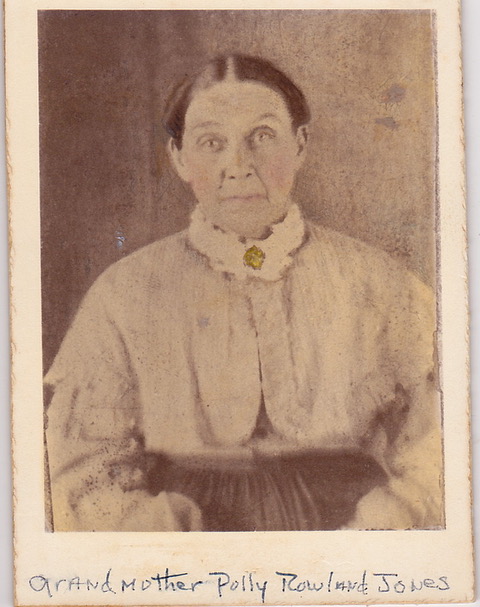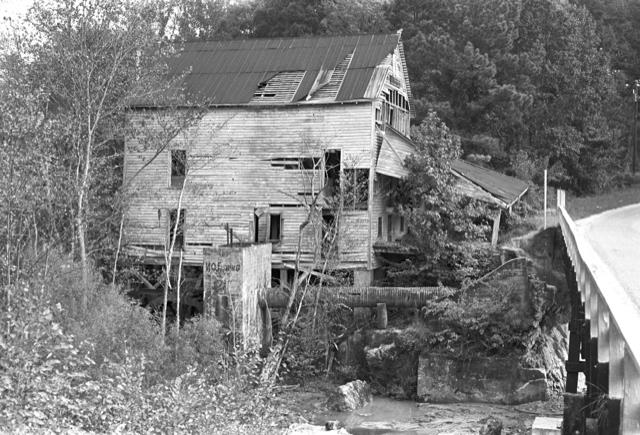In recognition of Women’s History Month (March), we have selected three ladies from our past to highlight. Docents at the Fuquay-Varina Museums often find themselves referring to “those three Jones girls” as they tell the story of our area to visitors. Many of our artifacts and archives relate to their story and are told with zeal.
ETHELDRED Jones had three granddaughters who grew up in his home on Sunset Lake Road. This property was his original land grant of 1779 from the first Lord Caswell of the State of North Carolina according to Miss Ruth Johnson. The five hundred acres came to him for service with Joel Lane, Surveyor. Another grant of 640 acres came for his Revolutionary War Service. Over his lifetime, he continued to add to his holdings.

His father, Philip Jones, who lived in Edgecombe County died when he was 11 years old. Etheldred married Jean Lane, Joel Lane’s niece, and built their home on the hill looking over Terrible Creek about 1780. By the time of his 1835 death he is reported by various family sources to have amassed 50,000 acres. His descendants are part of much of Wake County history.
Our three Jones girls are his grandchildren and the daughters of Barnabas Jones, youngest son of Etheldred Jones, who inherited the homeplace. According to the custom of the day, the homeplace was reserved for the youngest child. Barnabas was the heir of some 3300 acres of land (according to Ruth Johnson) which was only a small portion of the estate of Etheldred. Their home is still standing, with many restorations, on the property of the Jones- Johnson Home Place, also referred to as the Standard Homes business site.
The family story goes that Barnabas was working at the grist mill on Johnson Pond when a young lady named Polly Rowland passed that way on her first day of school. He was reported to have announced that he would marry that lass. Indeed, he did marry the only daughter of Lewis Rowland, son of William Rowland and part of the Rowland clan of Willow Springs and environs. At their 1835 marriage, Barnabas was 49 and Polly was 27.


Polly became a widow with the THREE JONES GIRLS, age 7, 6, and 4, in the year 1843, according to Miss Ruth Johnson’s research (p. 93) His will arranged for the land to go to the three girls. The oldest, Mary Jane Lane Jones inherited the mill pond and about 1400 acres along what was the old stage road and the Post Office called Old Shop. The middle daughter, Betsy Ann Jones inherited the virgin timber land of over 800 acres. The baby, Rhoda Ann Mayberry Jones was heir to the homeplace and 1100 acres of land which could be used by her mother in her widowhood. Polly remarried a lawyer named Nathan Gardner and thus was no longer entitled to the homeplace although she lived on there until the girls married in 1856.
Mary Jane, at the age of 20 years, was courted by John Lewis Johnson from down in Summerville, in Harnett County. Born in 1836, Mary Jane was said to be very gentle and never ruffled. Her husband, Lewis was noted as full of jest and pranks. She lived two years after he died. She suffered from asthma and a cough most of her life and this intensified in 1905, resulting in her death.


At several times of his life, John Lewis was post master at Old Shop alternating with Mr. Utley. They lived in the area we know as Five Points today, in what is now the home of the Adcock family behind the John Deere property on 401 N. The museums also have a letter from a medical doctor asking him about his satisfaction with medical marijuana dated 1877.
This couple became the parents of Almira Isabella, Ida Jane, Kemp Bethea, Mary Lorena, Helena Ella, James Beale, Seaton Willard, and John Lee Johnson.
From this Jones girl, descendants today include the K B Johnson family who founded the oil company. K. B. was President of the Bank of Fuquay and a leader in the growth of the town and the railroad. He is credited with naming Cardenas, Kennebec, and with the large lumber business of several counties. He was killed when an unexpected train rammed his automobile as he was crossing the rail line in front of his house just off present 401 N.


James Beale Johnson should be associated with the large antebellum home off Johnson Pond Road above the mill, recently owned by the Turner family. His first wife, Della Ragsdale is the famed statue located in the Wake Chapel Cemetery.
The oldest daughter, Almira married into the McCullers family of the area called McCullers, today. Her record at Elon and her many friends are all recorded in the Johnson family book. Sadly, she died in 1893 when her first child was only two weeks old.

Lorena married Zeb Atkinson from Georgia. Hollis Atkinson, Mary Jane’s grandson, became a professional baseball player. The Atkinson home was located across the mill pond and is still standing. Locally, it is associated with the Whitted family who lived there many years. Recent owners have removed the porches and the old water tower.


John Lee Johnson became the pastor of Wake Chapel Church, serving 29 years there. His wife, Kate and daughter Katie Lee Russum taught in the local schools.
The youngest Jones girl, Rhoda Ann married that same year (1856) to her Johnson suitor. Rhoda Ann and William Wesley Johnson had seven daughters and three sons: Virginia Frances, Julia Isabella, Archibald Neill, Mary Ann, Marilla Irene, Otilla Rosalie, William Lewis, Daisy Valeria, Ethel Lucille, and Alfonso Gales. They built the large home now on the Jones-Johnson property about 1860.


Wesley died of a heart attack in 1896. Rhoda Ann then took over the reins of his property and church duties and even opened a small dairy operation before her death in 1900.
Isabella became the wife of John A. Mills who built the Raleigh and Cape Fear Railroad from Raleigh to Fuquay Springs which became the Raleigh and Southport in 1902. During flood, Mills is said to have loaded box cars and parked them on the railroad bridge over the Cape Fear River. The highway bridge washed away but the rail bridge was held in place. This line, sold to Norfolk and Southern in 1911, is still in operation through our town.

Irene became a teacher extraordinary. She taught at Holly Springs High School and then in the math department of Elon College. Irene married a Burlington attorney, John Cook, and then did advanced study at Chicago University. In 1904, she returned to her home and built a private school on Sunset Lake Road.

Archie Neill Johnson became an entrepreneur. Establishing a store in Corinth, he employed two gentlemen named Rufus Ashworth and Elmo Fish. From his home in Cardenas, (moved and renamed the Caramba Inn) he operated a small freight station.

On September 1, 1911, he opened the first retail establishment called A. N. Johnson on Main Street in Fuquay Springs. Officially, still chartered under that name, Johnson brought Elmo Fish from his Corinth store to manage this one. The business was bought out by the Fish family and operates under the name, Elmo’s. Rufus Ashworth joined the business after World War I and eventually opened his own retail establishment on Main Street, Ashworth’s Clothing today.
The youngest son, Gales inherited the homeplace. He is credited with adding the columns and huge porches with the circular effect on the front. He met and married Buelah Olive. They had two sons, Glendon and William, who would raise families in the area.

Much of Gales’s life was spent away from here. A graduate of the Anerican School of Phrenology, he worked the lecture circuit in various cities. While in Detroit, he realized the need for mass building of homes. As a a result, he and a partner formed Standard Homes Plan Service in Washington, D.C.,

In 1920, Beulah and Gales moved home so the two boys could connect with their roots. Gales commuted on weekends, often via rail and sometimes by driving his cadillac from D.C. He helped his sons establish the Standard Homes Plan Service in Raleigh which they then transferred to the homeplace, building the company offices and plant on Sunset Lake Road. This business, with the address, VARINA, provided that community a major economic success for many years.

William married Lois Frazelle and inherited the house. He was instrumental in helping establish the Fuquay Library and was a major force in the Fuquay Springs Methodist Church. At his death in 1974, his wife and daughters remained in residence. Joanna and her husband, Philip Proctor took over the Standard Homes business. Today the historic houses on the National Register property are in the hands of Jones-Johnson-Proctor descendants.
The middle Jones daughter, Betsy Ann, broke her engagement to a third Johnson marrying William Marshall Ballentine instead Their family story was told in Part III of the Ballentines. (fuquay-varina-museums.org, Historically Speaking, June 19, 2021)
When Betsy Ann’s mother, Polly married her third husband, Alexander S. Utley, it was said for “love.” The widower had been her first love, she declared. When their home burned, William Ballentine added an attachment to his home according to Mrs. Parker. This she described as a big room connecting his house and the kitchen built for her and Grandpa Aleck. Grandma Polly visited all the family and “inspired them by her courage and independent manner of life” according to Edith Parker. Utley died in 1888 and Polly in 1901.
So when Barnabas announced his plan to marry Polly Rowland, the story of so many families of Fuquay Springs and Varina had their beginning. Those THREE JONES GIRLS became the roots for much of our area history. Their grandfather, Etheldred, is buried in the family cemetery on the Jones-Johnson property and his name appears on multiple properties on our land grant map of Wake County displayed in the museums.
Sources: Concerning Our Ancestors the Johnsons and their kin, Ruth Bethea Johnson,
Harold Parker and Sons, Printers, Standard Homes Plan Service Distributors, 1980.
Interviews of Edith Parker and Ruth Johnson in Independent, F.V. Museums files.
